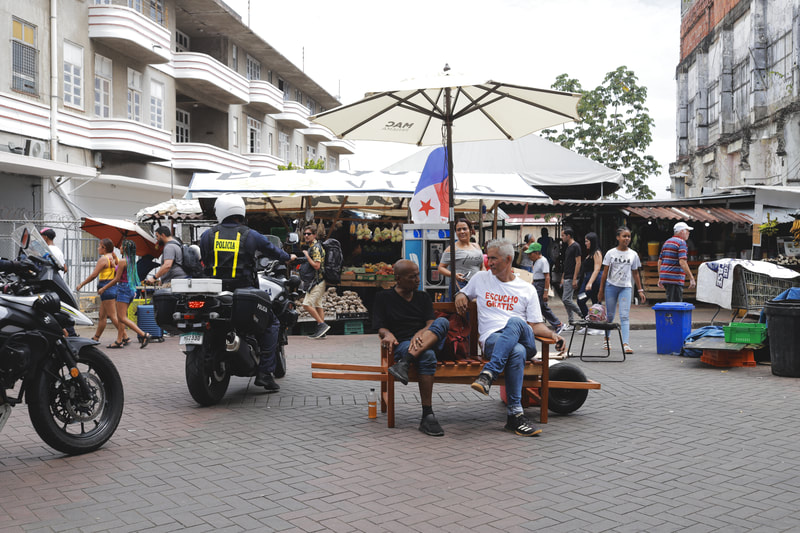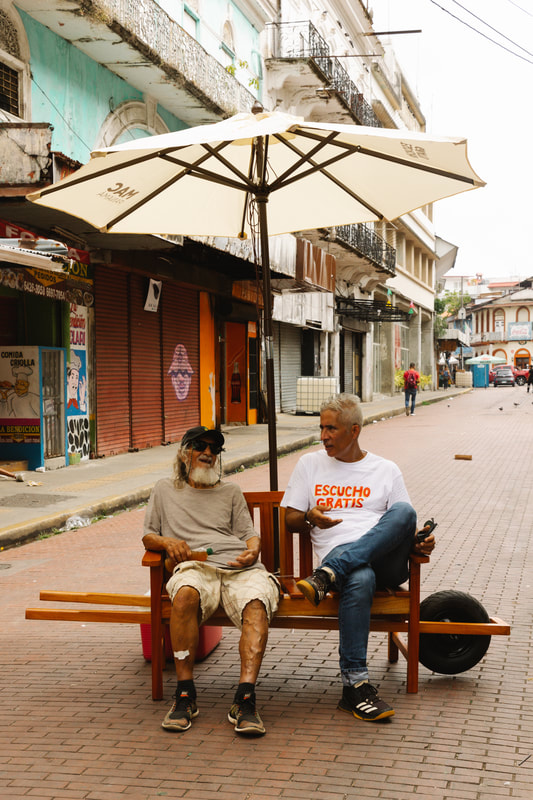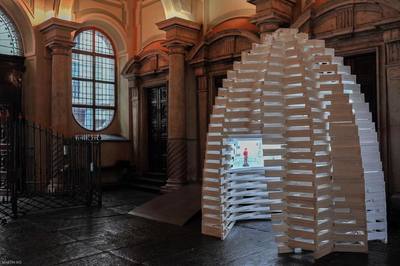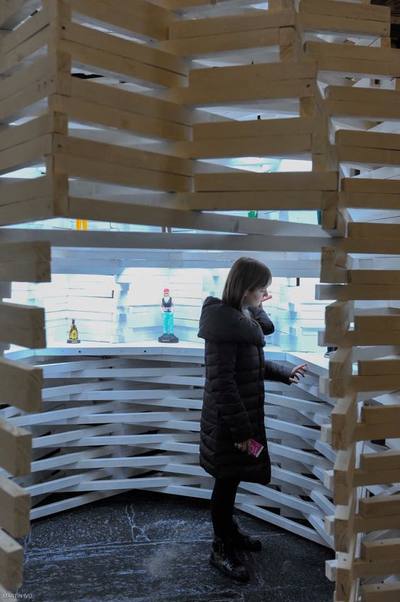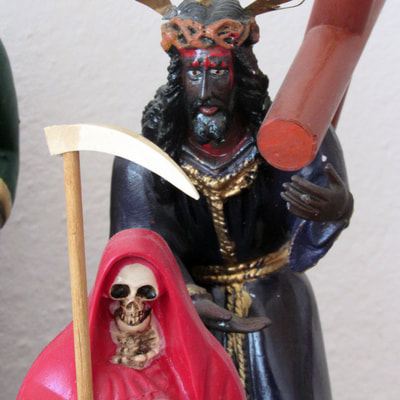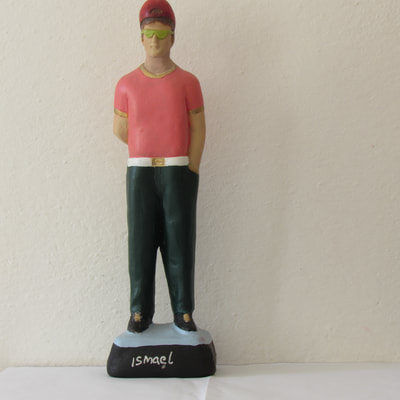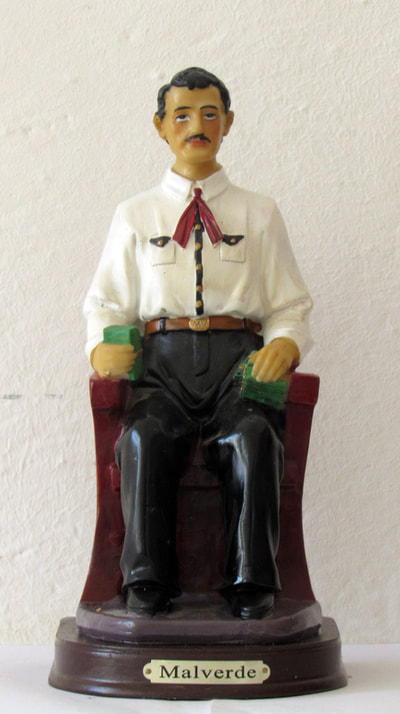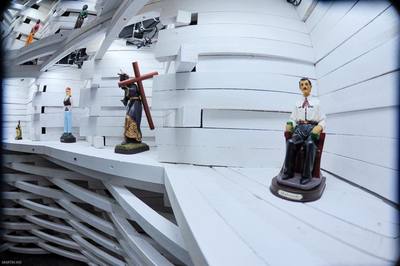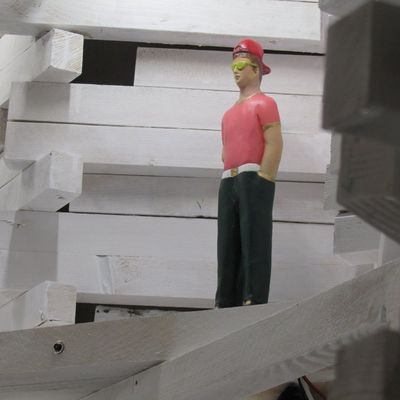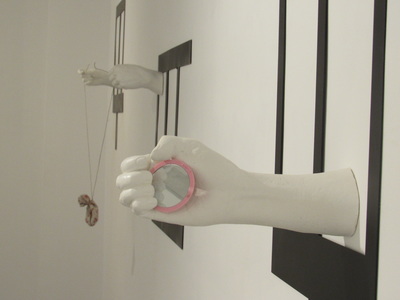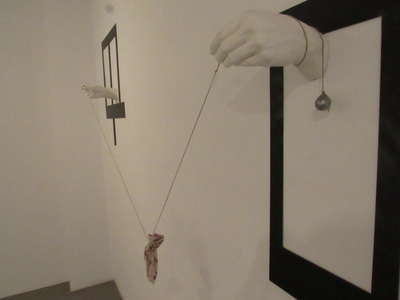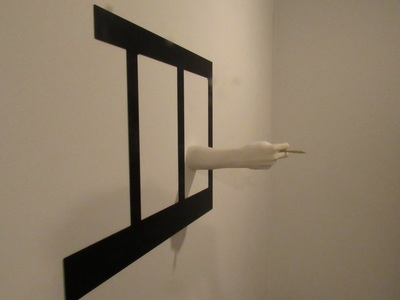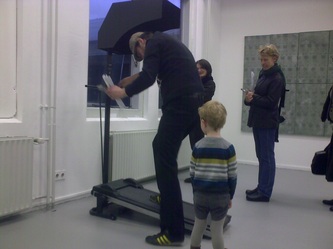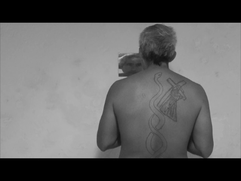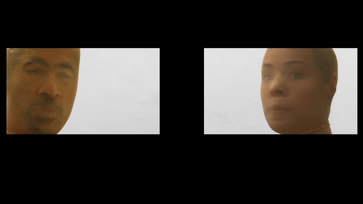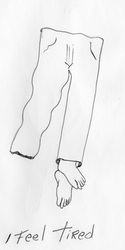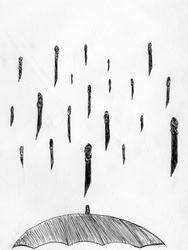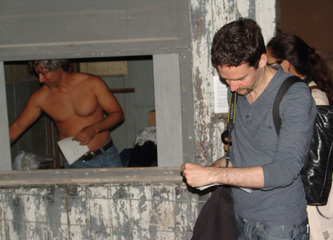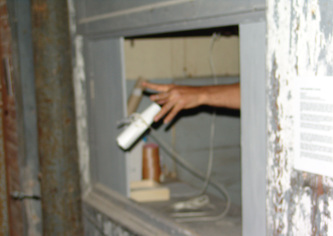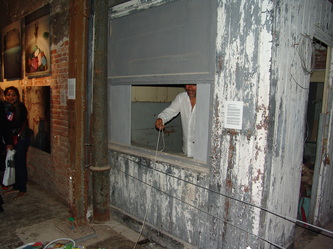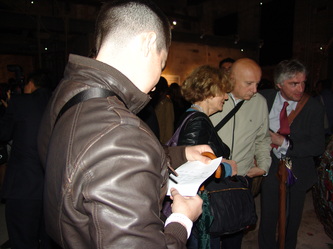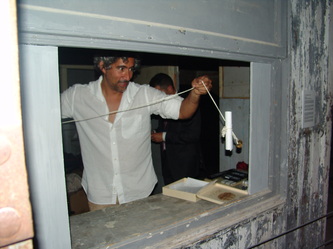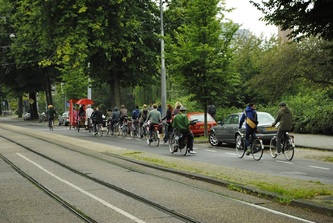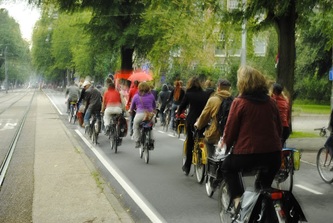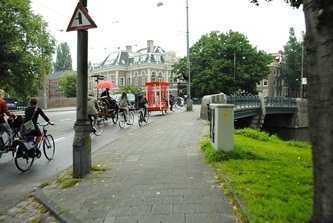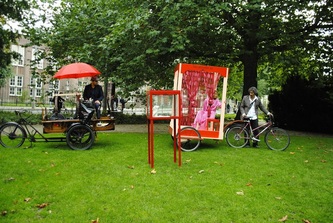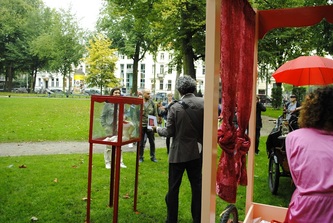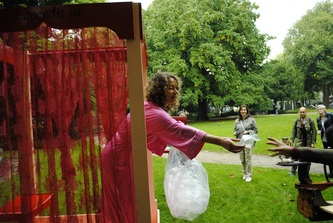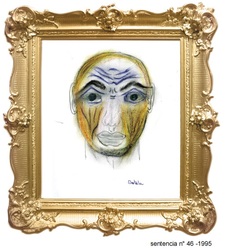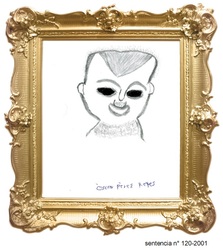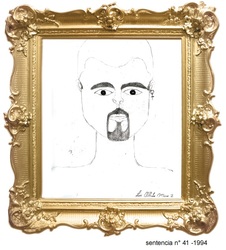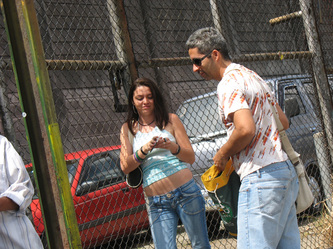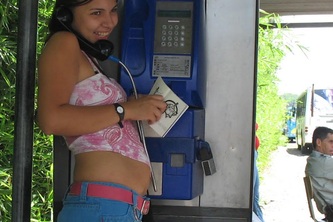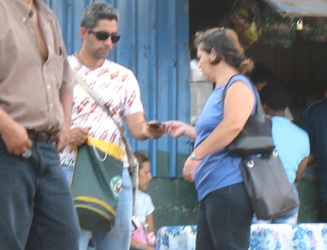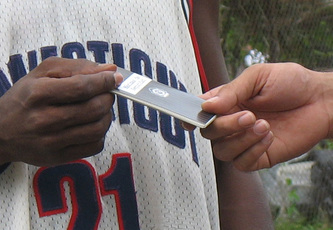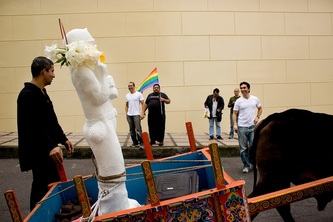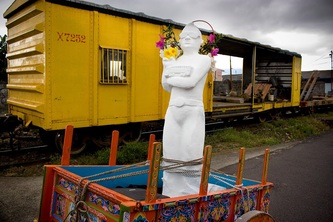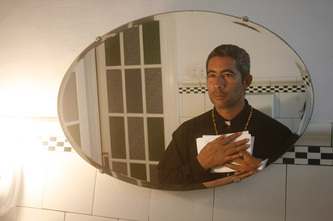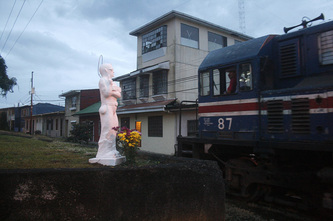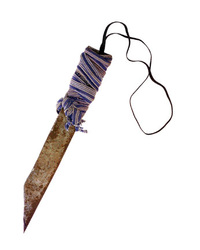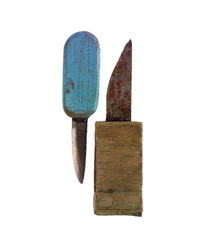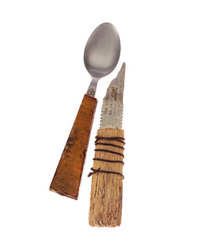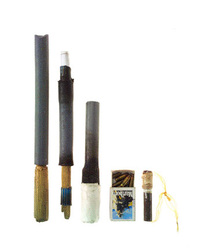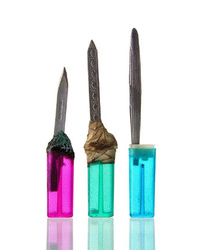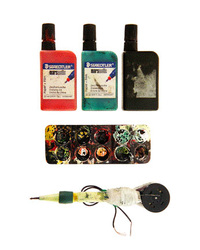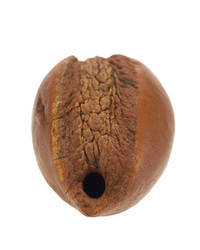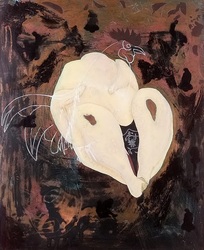"I Listen Free" Performance Artist
| |||||||
| maximas2[1].pdf | |
| File Size: | 1204 kb |
| File Type: | |
Sculptures
Domus Sanctorum
“Domus Sanctorum” (Casa de los Santos)
escultura interactiva Jhafis Quintero realizada en colaboracion con la niversidad de arquitectura de Torino Creando belleza y bajo la curadoria de Daniela Rosi y Tea Taramino
En nombre del ladre, el tiro y el espíritu landro. Amén
En las favelas de Venezuela desde los años ´60 los lugareños beatifican clandestinamente a algunos de los jóvenes delincuentes que en vida ayudaban con el producto de sus robos a la gente más necesitada, generalmente estos muchachos nacidos y criados en un medio ambiente amorfo viven destinos pre diseñados que no superan los 25 años de edad. Mueren abatidos por la policía de manera espectacular (requisito necesario para la beatificación). Diez años después de la muerte de estos muchachos, se inicia el proceso de beatificación, se construyen estatuas de yeso a su imagen y semejanza, incluyendo cicatrices y tatuajes. Se les llama popularmente La Corte Cale o Santos Chamos , se van popularizando a través de historias y reconstrucciones de sus vidas y milagros, se les rinde culto en los cementerios y sitios como casas espiritistas oficiales, donde las personas acuden en masa. Los fieles les brindan principalmente anís, cigarrillos o marihuana como parte del ritual, no solo para pedirles favores tradicionales sino también para pedirles protección de enemigos y bendición en sus actividades delictivas. Estos santos son popularmente conocidos como los Santos Chamos.
Prótesis' (Prosthesis, 2015, instalation)
which transforms the gallery space into a prison corridor, with the quotidian objects of prison survival -cigarettes, a mirror, a sharp knife, reshaped into sculptural innuendos passed through the resin prostheses signifying bodies constructed in parts and never in wholes, temporary structures or survival and need. Through the brutal mechanism of the prison cells, by no means an experiment in re-socialization, the social is not altogether destroyed but adapted to a new reality. The evolutionary quotient of a species plays a significant role here, violating the institutional body of metal and concrete, and reforming its architectures of control into a new, richer public domain, with its own rules inscribed beyond the pale of the law; this new prosthetic body is an autonomous entity, free from constraint. Placing an incision marker between art and everyday reality

denuncia secreta/dibujos en cemento | 2011 | Pencil, marker and engraving on concrete
This piece is part of a series of drawings on wood panels covered with special concrete and using basic tools like pencils, markers and sharp objects, just like inmates do in jail.
With this work I Intend to exorcise and transfer to the concrete my daily anxieties, reflections and fears. practice i have learned for 10 years in jail and now i can mix with my artist experience.
This type of graffiti has a vital significance in prison, it is the only way to make contact with yourself, to materialize the body that in these unusual circumstances ceases to belong to oneself to be subject to judicial punishment and therefore owned by the judicial system for the duration of the sentence.
These drawings help keeping the essence and do not allow us to forget who we are outside these sites. It is a way to perpetuate memories transferred as an indissoluble tattoo on the walls of the prison, which are a second skin that the prisoners inhabit.
With this work I Intend to exorcise and transfer to the concrete my daily anxieties, reflections and fears. practice i have learned for 10 years in jail and now i can mix with my artist experience.
This type of graffiti has a vital significance in prison, it is the only way to make contact with yourself, to materialize the body that in these unusual circumstances ceases to belong to oneself to be subject to judicial punishment and therefore owned by the judicial system for the duration of the sentence.
These drawings help keeping the essence and do not allow us to forget who we are outside these sites. It is a way to perpetuate memories transferred as an indissoluble tattoo on the walls of the prison, which are a second skin that the prisoners inhabit.
Pasarela | 2010 | Installation
This sculpture installation deals with the way public institutions design people. Walking across this object people lose their identity, individuality, and become part of a general design.
This is inspired by structures that you can find in airports, banks, public offices, etc..
The red carpet is an ironic allusion to an invitation you can not refuse because if you need a service you have to carry out the ritual of being designed by these objects.
This sculpture installation deals with the way public institutions design people. Walking across this object people lose their identity, individuality, and become part of a general design.
This is inspired by structures that you can find in airports, banks, public offices, etc..
The red carpet is an ironic allusion to an invitation you can not refuse because if you need a service you have to carry out the ritual of being designed by these objects.
This project is inspired by the book of Franz Kafka, the Colony, but also in the prison experience, not as a goal but as a metaphor with the intention of keeping a more universal “lecture” of the piece.
The object is an interactive sculpture: a stationary treadmill, re-designed with the intention of using some particular aspects of the popular notion that these machines already have and combine them with others that are suggested in the new design.
The machine has a post with a support for the hands that requires submission as do the inmates in prisons to be handcuffed. At the top is a box where it enters the head, so the machine designs the position of the body of those who use it , but in a physical level as well when the subject start walking on the treadmill, it activates a device that force you to hear a popular religious discourse through a speaker located inside the cabinet.
The voice refers to the pay of a wicked man and the rewards of God-fearing man (Psalm verse 1). Then the design is completed: it is not only physical but also mental.
Once the head is located inside the box, the subject only can see out through an small hole in the front of the box.
The object is an interactive sculpture: a stationary treadmill, re-designed with the intention of using some particular aspects of the popular notion that these machines already have and combine them with others that are suggested in the new design.
The machine has a post with a support for the hands that requires submission as do the inmates in prisons to be handcuffed. At the top is a box where it enters the head, so the machine designs the position of the body of those who use it , but in a physical level as well when the subject start walking on the treadmill, it activates a device that force you to hear a popular religious discourse through a speaker located inside the cabinet.
The voice refers to the pay of a wicked man and the rewards of God-fearing man (Psalm verse 1). Then the design is completed: it is not only physical but also mental.
Once the head is located inside the box, the subject only can see out through an small hole in the front of the box.
La maquina | 2011 | Installation
'Bulova' (2015),
homonymous with shackles in prison slang, the boots trapped in the shackles are painted gold to refer to the monetary value of mass imprisonment today, in which prisons are run for a profit by private companies, little interested in the re-socialization of the inmates but whose profit margin is based on the perpetual incarceration of young population at risk, turning their bodies into private property. This now global for-profit-model, has extended the technological dominion of the body into a multimillion dollar business and imprisonment into a corporation beyond the control of the state. With the authority of the state disempowered and millions living under the globalization of debt and economic inequality, the prospects of liberation for those anonymous labor bodies behind bars, incarceration has become a political issue of the first order, alongside immigration. 'Reforma' is more than a journal from prison or an anthropological survey. By examining the conditions that underlie the global prison system today, Quintero provides a scathing criticism of the modern institutions of society and how their mechanisms of control, intertwined with the financialization of democracy, degenerate in the bio-political condition. This bio-power, practiced by modern states and corporatism, in order to subjugate bodies through regulatory environments, strips not only inmates from an objective world, but all those -artists included- whose living space is privately owned. The artist, however, leaves a space open for 'reform': Amidst the incredulity and instability of being in the present world, there remain a lot of vital spaces for human communication, albeit often oblique, which occur in unexpected manners and reshape what it means to be human, in unique, miraculous forms.
Videos
Mirror video-(2017) duration 1: 27 minutes
still image
https://vimeo.com/182384723
This video talks about the “relationship between the architecture of prisons, designed and conceived to limit, and the creativity of prisoners to overcome these limitations. The small gesture of a subject sentenced to silence in a prison that is already a punishment per se, transforms a heavy concrete and metal wall into another “being”, an entity with whom he interacts. Thanks to the creativity of this prisoner, he is no longer alone and the wall is no longer a wall. This piece addresses the issue of isolation with great precision, evidencing how creativity allows us even in the limiting moments to find ways to re-signify our own bodies to establish new forms of communication, simple but powerful ways of affecting the environment and even the physical laws that sometimes they hold us away from others.
Eternity Video- duration 3:57minutes.
still image
https://vimeo.com/699120850
'La liberté est relative' video 2014 duration - 3:54 minutes
still image
this video approaches freedom under the guise of the false liberties associated with artistic practices, examining the nature of the contemporary, bound by an institutionality that censors and markets, where it is increasingly difficult for art to address itself without banisters. The sword of Damocles, from a story of the Roman philosopher Cicero, making allusion to the peril faced by those in a position of power, hangs from the artist's head, as a reminder of that freedom and power Quintero regained after prison, and that is now constantly in question for an artist. Bridging the gap between his erstwhile experience and his current practice, the meaning of freedom is addressed as a fundamental lack in modern society, extrapolating the jail corridors to the outside world.
collection
“spidres”
Video 01:34
https://vimeo.com/142504664
My experience of 10 years in prison for bank robbery allowed me to see and be part of the affiliation processes in prison and the eventual loss of the image and jurisprudence of one's own body, which become the intellectual property of the justice system.
Outside of prisons, society has contracted, the methods are much
More subtle, the walls are conceptual, ideological, religious: a simple yellow line is already a two-dimensional wall capable of social redesign.
Always more subtle, technology and its sensors around society have transformed human beings into simple data that can be measured, such as temperature.
In any case, even if we are free we end up stripped of our own image.
Creativity within prisons has always been a matter of life and death, the need of those deprived of liberty to violate the architectural limitations that have been designed to limit the human beings who inhabit it. It has allowed them to find ways to redefine their own bodies to establish new forms of communication when silence is a punishment. Simple but powerful ways to affect your environment and even the physical laws that contain them away from others.
In this performance the imprisoned body breaks the institutional architecture of confinement, that is, it violates that second skin of cement and metal and seeks to find its own humanity in others.
This work immediately reminds us of the film 'Un Chant d'Amour' (1950) by the novelist Jean Genet.
As the only means and means, the body is elevated to the condition of sensory and sensual, turning metaphysics on its head: the soul is not imprisoned in the body, but is released outwards solely and exclusively through the body.
https://vimeo.com/191271900
Metamorphosis:| 2015 | Video | 0:58 min
This video It has to do with the limits, not only those physical, mentals, religious or conceptuals, but also the bi-dimensional ones like the yellow lines commonly used to redesign the masses. This video also talks about the eternal and constant struggle between architecture (limits) that has been designed in some contexts to limit the human beings that inhabit it and their creativity to overcome it. Finally, the inner distance that this struggle generates in some, with the artificial ideas that they have been cultivated within them, sometimes allows them to seek alternative ways for a real change. Prisons or any type of reclusion does not work, what works is creativity exercised in the right direction.
Discipline:| 2015 | Video | 1:38 min
still image
https://vimeo.com/227369696
This video is inspired in my own experience and shows one of the fundamental exercises to survive in extreme situations such as imprisonment or worse the isolation that can become a prison within a prison. Inside prison it is need a lot of creativity and discipline to survive and maintain sanity and even a coin of little value can make huge difference. In some places like prison there is a battle taking place, a battle between creativity and the architecture designed to limited
All the way : | 2014 | Video | 2:43 min
still image
https://vimeo.com/699100838
This video talks about the value of a trip despite the interrupted images from that particular perspective that still having a fundamental value. As in all my art works, the video “All The Way” is the result of my experience in confinement and the study of human behavior in circumstances where people have no choice but to be human. Repetition is the real punishment of prison, and everyone's goal is to avoid it by any possible way. Unfortunately all the possibilities to create different combinations and and renew the reality expire very quickly leaving them all immersed in a still image. An option to escape from this image is the trip to the hospital in prison cars, they are small but there are small gaps and holes where prisoners can see glimpses the outside, images interrupted by the speed of the car. These fragmented images of the outside are the big prize, the possibility to break the routine for which all the inmates are minded to hurt themselves self stab, slash his wrists, etc. Many techniques have been developed to be taken to hospital and so repetition. the traveler recognizes the little that is yours when he discover how much he has not had and never will have, repetition is every where in prison, even of course in the free life, different depending on the context but not longer repetition. I also think of Kavafi saying that Ithaca is not a destination to reach, but all the way to. who observes this video will see from the perspective of a prisoner who are scaping from repetition paying big prices. The viewer became the inmate. The phrase repeated several times during the video through a walkies talkie Watch your self that has several possible meanings, look at yourself, but could means also beware. In the usual darkness in such transports only radio communications security is a sound that never lets you forget that the freedom is always been conditioned.
Sisyphus: video | 2014 | Video | 1:49 min
still image
https://vimeo.com/699111737
the video shows a man running in circles tirelessly, endlessly. In the repeating time perception becomes atrophied, this is what happens in prison, inmates lives eternally the same bad moment, there is no difference from one day to another. Even if the sentence is for a few years, for the inmate it is eternal.
Title Text.
Hombre que camina| 2013 | Video | 2:08 min
|
|

